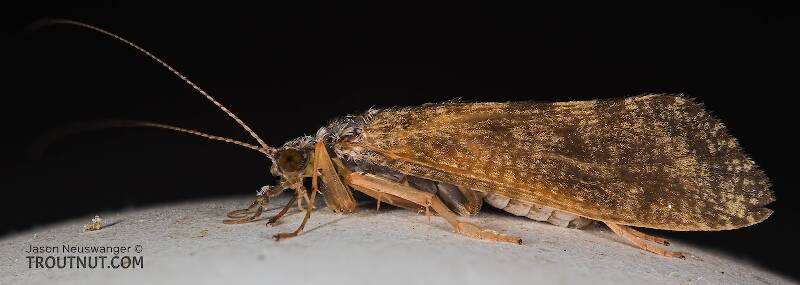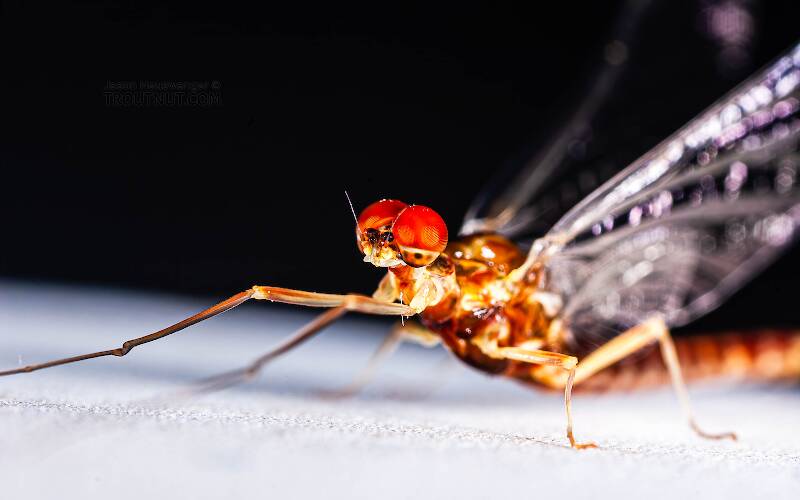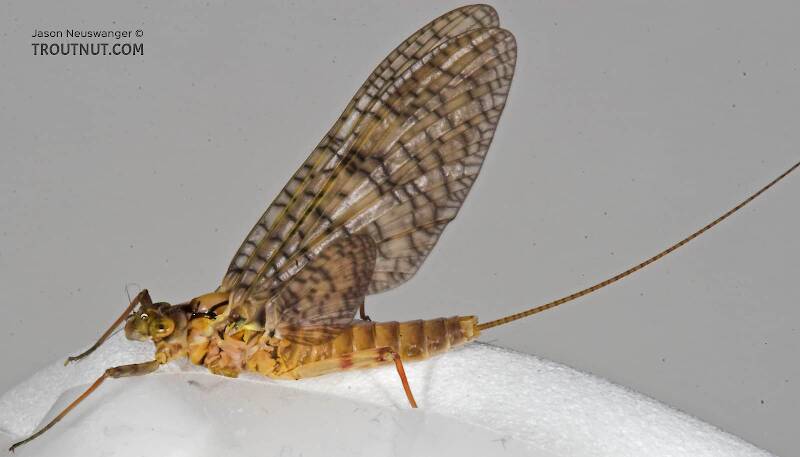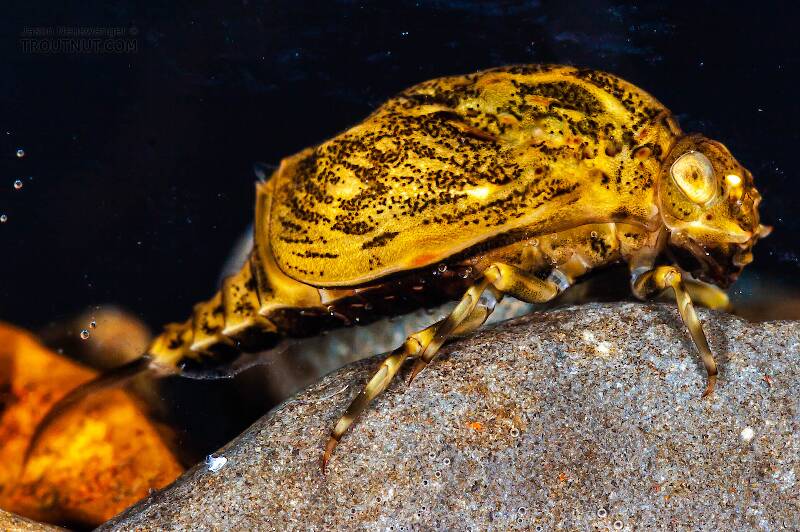
Salmonflies
Pteronarcys californica
The giant Salmonflies of the Western mountains are legendary for their proclivity to elicit consistent dry-fly action and ferocious strikes.
Featured on the forum


Troutnut is a project started in 2003 by salmonid ecologist Jason "Troutnut" Neuswanger to help anglers and
fly tyers unabashedly embrace the entomological side of the sport. Learn more about Troutnut or
support the project for an enhanced experience here.
Mayflies
Mayflies are the most important insects for anglers to understand, because they are common on trout streams, they often hatch in frenzied bursts of activity, and their behavior varies so widely between families and sometimes even species that it's useful to know and imitate the habits of each. They are a primitive order of insects, and their elegance and delicate lives have made them popular beyond the world of trout fishing.
This common name refers to only one order. Click its scientific name to learn more.
Insect Order Ephemeroptera
These are pretty much always called Mayflies.
Mayflies may be the most important insects for trout anglers to understand. They are an ancient order of insects, famous outside the fly-fishing world for their fragile beauty and short adult lifespan, often a single day to mate and die. The mayfly's poignant drama attracts poets and anglers alike, but anglers make the most of it.
Mayflies live more than 99% of their lives as nymphs on the river or lake bottom, filling many crucial roles in freshwater ecosystems as they feed and grow. They eventually emerge from the water as winged sub-adults called "subimagos" by scientists and "duns" by anglers. Duns evolved to be good at escaping the water, with a hydrophobic surface and hardy build, but they are clumsy fliers. Within a day or two they molt one last time into "imagos" or "spinners," the mature adults, a transformation captured in this photo series of a dun molting into a spinner. They have longer legs and tails, and sleeker, more lightweight bodies, giving them the airborne speed, agility, and long grasp they need for their midair mating rituals. They are usually darker than the duns and have shinier, more transparent wings. They die within minutes or hours after mating.
Mayflies live more than 99% of their lives as nymphs on the river or lake bottom, filling many crucial roles in freshwater ecosystems as they feed and grow. They eventually emerge from the water as winged sub-adults called "subimagos" by scientists and "duns" by anglers. Duns evolved to be good at escaping the water, with a hydrophobic surface and hardy build, but they are clumsy fliers. Within a day or two they molt one last time into "imagos" or "spinners," the mature adults, a transformation captured in this photo series of a dun molting into a spinner. They have longer legs and tails, and sleeker, more lightweight bodies, giving them the airborne speed, agility, and long grasp they need for their midair mating rituals. They are usually darker than the duns and have shinier, more transparent wings. They die within minutes or hours after mating.

This spinner molted from a dun after being photographed, and the dun form is listed here as a separate specimen. I've rarely found a more cooperative and photogenic mayfly.
See 889 more specimens...



